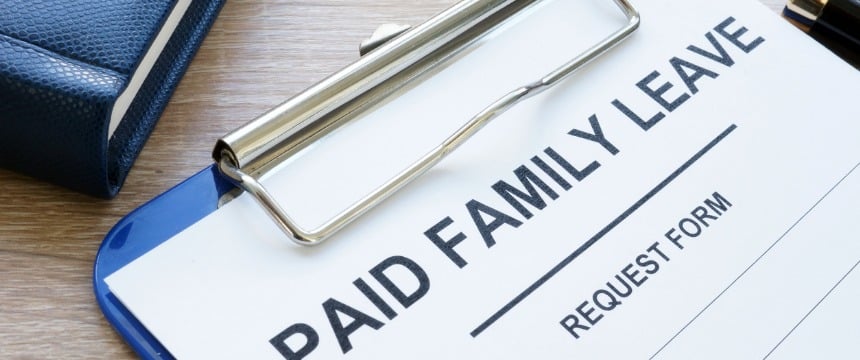New Year, New Notice Requirement: DC Paid Family Leave Notice Requirements Take Effect January 1, 2020

As we’ve previously reported, paid family leave laws have been sweeping the country. While employees will not become eligible to take paid family leave (PFL) under the District of Columbia’s Universal Paid Leave Amendment Act (UPLA) until July 1, 2020, employers must begin complying with the law’s notice requirements on January 1, 2020. The law contains multiple notice requirements for employers and a failure to comply may result in significant penalties.
Notice Requirements Effective January 1, 2020
Beginning January 1, 2020, DC employers will be required to provide notice about PFL to:
(1) all new employees within thirty (30) days of hire (either in paper or electronic form);
(2) all employees at all times (via a physical posting in a conspicuous place for each worksite);
(3) all employees annually (either in paper or electronic form); and
(4) each covered worker at the time the employer learns that PFL may be needed (either in paper or electronic form).
The physical poster, which should be posted this week on the PFL website, must be kept in a conspicuous place at each work site where labor notices are customarily posted. Covered workers who work remotely or primarily telework must be sent the poster in electronic form so they can hang the poster at their individual work sites.
Under the PFL law, a work site is any location where business is conducted or where services or operations are performed, meaning that some employers may need to post multiple notices in the same building (e.g., in each breakroom if a company has separate breakrooms and employees would be unlikely to see a poster in another floor’s or department’s breakroom). There is a $100 per day penalty for failing to post the physical notice to employees.
Employers must also provide each new covered worker with the same PFL notice within thirty (30) days of hire and all covered workers with the notice annually, both of which may be sent out electronically. Employers are responsible for establishing that they have complied with all notice requirements. For the individual and annual notices, compliance can be established by maintaining email receipts or signed acknowledgements from covered workers confirming receipt of the notice. There is a $100 per employee penalty for failing to meet individual notice requirements.
Finally, employers must provide the PFL notice each time they become aware that a covered worker may need to take PFL. Employees are not required to formally request PFL and need not even be aware of their eligibility for PFL or even know if they will actually take time off of work when they provide notice to their employers. Employees are only required to provide direct notice of the underlying need for leave, which may be provided by a family member, coworker, or another person when a covered worker is unable to give direct notice because of an emergency. Notification to a manager may be sufficient to demonstrate that the “employer” was notified of the need for leave.
An employer who fails to meet the individual notice requirements will be subject to a $100 per employee penalty.
Action Items:
- Determine all work sites that require posted notice by January 1, 2020, and post the required notice in every work site before the beginning of the new year.Provide the poster electronically to employees who work remotely or primarily telework.
- Incorporate the notice into new hire paperwork or the new hire onboarding procedures.
- Create a system for receiving, tracking, and maintaining notice acknowledgment forms or email read receipts to demonstrate compliance.
- Train managers on how to identify when employees may be eligible for PFL and the proper procedures for reporting the potential need for leave within the company so that notice may be provided.
When PFL benefits become available, covered workers will be eligible for the following benefits:
- Up to six (6) weeks of leave within a 52-week period to provide care to a family member because of the diagnosis or occurrence of a “serious health condition” of the family member.
- Up to two (2) weeks of leave within a 52-week period following the diagnosis or occurrence of a serious health condition of the employee.
- Up to eight (8) weeks of leave within a 52-week period to bond with a newborn or a child placed for adoption, foster care, or in loco parentis.
As a reminder, covered workers for purposes of PFL benefits means:
- Workers who spend more than 50% of their work time for an employer working in DC; or
- Workers whose employment is based in DC and:
- Who regularly spend their work time for the covered employer in DC and not more than 50% of their work time in another jurisdiction.
- Whose work time spent at another work site outside of DC is incidental in nature; is temporary or transitory in nature; or consists of isolated transactions.
The DC Department of Employment Services (DOES) will manage applications for benefits and make eligibility determinations. Covered workers will receive benefits on a sliding scale based on income, up to 90% of their average weekly wage and a maximum of $1,000 per week of leave. Employers are not required to pay the difference between the PFL benefit and a worker’s normal pay, but can elect to coordinate their paid leave policies with PFL to help employees receive full wage replacement. Employers who already provide paid leave or other benefits such as short-term disability for the life events covered by PFL should review their policies before July 1, 2020, to ensure that their policies comport with and, where desired, coordinate with the PFL law and benefits.